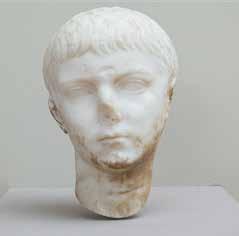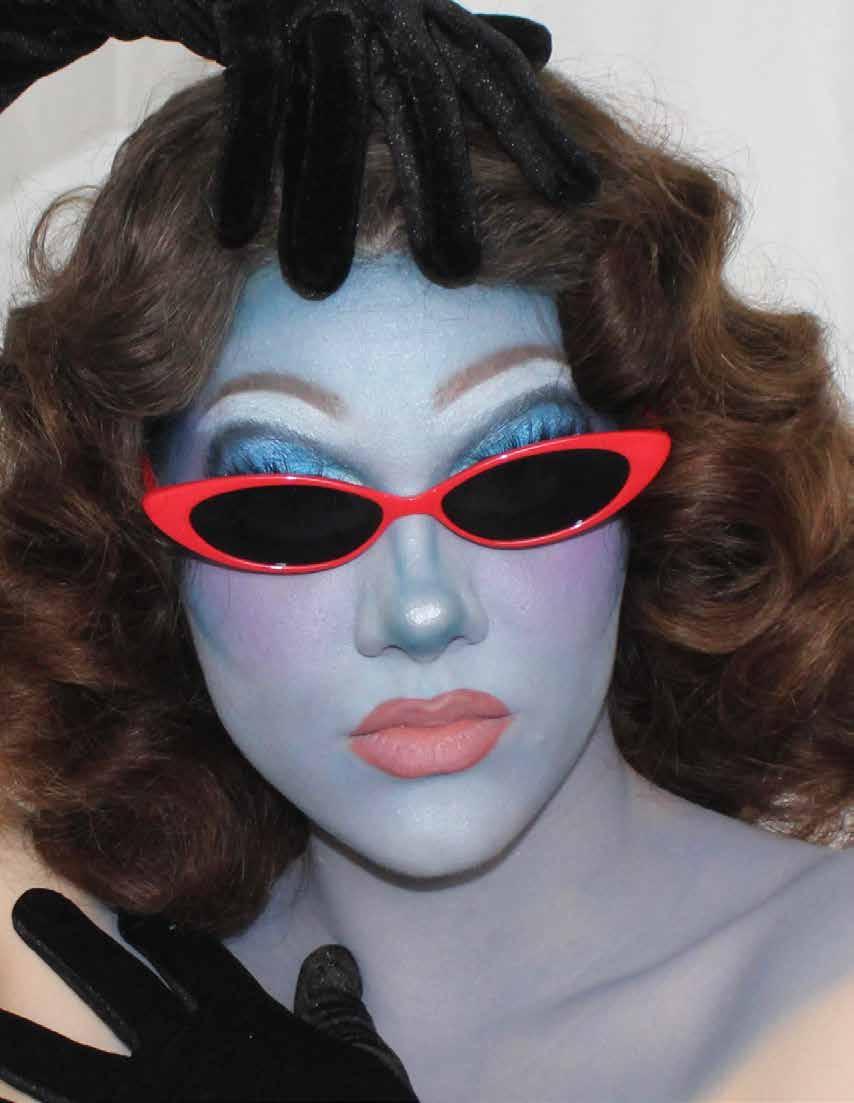
4 minute read
THE GRAYSCALE WEST
By Sydney Taylor Collins, Social Media Director
Chromophobia, as defined by the Cleveland Clinic, is “an intense fear of colors,” and is a diagnosable disorder. However, the term acquired cultural relevance when David Batchelor, a Scottish artist and writer, released his book, Chromophobia. Batchelor’s work does not focus on Chromophobia as a diagnosable disorder, rather as an “impulse” that exists within Western culture and intellectual thought. One can see this impulse across a wide range of domains: however, it is arguably most pertinent to both art and architecture.
Advertisement
A simple google search for “classy aesthetic” or “professional,” brings about mostly neutral, muted results. Black is also frequently associated with “sophistication, [...] power, and self-control.” Batchelor describes a Western belief that color is “something for children, savages, minorities, and women.” This sentiment has deep, historical roots.

A disdain for color dates back to Plato, who attacked color for the same reason he attacked rhetoric, associating the two with “makeup and polish and clothes” and seeing them as ornaments distracting from the truth. Philosopher Aristotle continued this sentiment, arguing that in drama, character is subordinate to the plot in the same way color is subordinate to form in paintings. He stated, “a random distribution of the most attractive colors would never yield as much pleasure as a definite image without color.” During the reformation in Europe, Calvinistic ideas began being seen as a distraction from God, symbolizing ‘sensuality and excess. Color was seen as unessential, being a superficial symbol of deceit and pretending.
“warm seat”
With the emergence of protestant Europe and supremacy of Dutch mercantilism during the reformation, black signified self-control, becoming a symbol of power, control, and business. Condescension of color continued throughout the Renaissance as well, and has continued to exist across history: examples of which exist today.

One can see chromophobia and Western beliefs toward color in a wide variety of media, art, architecture, fashion, and broader popular culture. The 1939 classic American film, Wizard of Oz, is a perfect example of this. The New York Times cites that “Dorothy’s drift into color results from her fall into unconsciousness.” There are many other citations of chemophobia in cultural phenomenons. The most commonly cited example of chromophobia exists within artwork, more particularly Ancient Greek and Roman busts and statues.
1https://my.clevelandclinic.org/health/diseases/22580-chromophobia-fear-of-colors#:~:text=Chromophobia%20is%20an%20intense%20fear,color%20they're%20afraid%20of. 2https://press.uchicago.edu/ucp/books/book/distributed/C/bo3536650.html
3https://www.thejuggernaut.com/why-the-west-is-afraid-of-color
Picture Ancient Greek and Roman statues: what comes to mind? You are probably envisioning white marble statues, which lack any color. This is a commonly held belief and one that even historians and academics often still hold. However, it is a myth. A myth which the West has insulated, preserved, and perpetuated across time.
In 2000, during an archaeological dig in Aphrodisias, an ancient Greek city (in present day Turkey), Mark Abbe, a current Professor of Art History at the Lamar Dodd School of Art at UGA, was surprised to see color. A systematic excavation of the city had begun in 1961, and since then, thousands of sculptures and fragments had been stored in depots. It was during his exploration and poking through of the depots that Abbe discovered this color. Like many, he believed that sculptors crafted ancient Greek and Roman stonework with white marble, devoid of any color.
Other archeologists have had similar realizations, including Vinzenz Brinman, who was pursuing his master’s degree in Munich, Germany, during the early 1980s. As part of his studies, he developed a special lamp, hoping to determine what kinds of tool marks existed on Greek marble. His examination of sculptures brought some understanding of a few tool marks found on the statues. However, his lamp also brought something else to light, evidence of color. Once he learned that ancient Greek and Roman statues were colorful, he saw that the pigment was visible to even the human eye. In an interview with the New Yorker, he stated, https://medium.com/swlh/men-in-black-the-fear-of-color-in-western-culture-33e42a5e92c2#:~:text=Color%20was%20feared%20and%20marginalized,the%20emotions% 20rather%20than%20reason. https://www.nytimes.com/2001/04/28/movies/vivid-color-in-a-world-of-black-and-white.html https://www.newyorker.com/magazine/2018/10/29/the-myth-of-whiteness-in-classical-sculpture
The historical lack of color cannot purely be attributed to Western values and beliefs. Over time, paint wore off as statues and busts were exposed to elements. Even buried objects, while they retained some color, were often buried under an accumulation of dirt and minerals, such as calcite. It is ascertainable to believe that this color was often brushed away during cleaning of the artifacts. As the New Yorker stated, “idealization of white marble is an aesthetic born of a mistake” “in time though, a fantasy took hold. Scholars of Greek and Roman art argued that sculptures were left white and colorless intentionally, differentiating them from non-Western art”.
Starting during the Renaissance, sculptures and architecture were constructed lacking color, in admiration of Greek and Roman colorless art. When colorful statues were excavated, they were attributed to the Etruscans, who were perceived as less civilized than their Greek and Roman counterparts. As excavations continued into the 19th century, discovery of color should have ended this white marble myth. However, an adoration for white led to the continued narrative of colorless statues.


This was coupled with the fact that art restorers felt the need to clean Roman and Greek artifacts to enhance their perceived collectibility and value. As Batchelor wrote, “at a certain point, ignore [became] willful denial.”
In an interview with “The Juggernaut,” Padma Kaimal, a professor at Colgate University in the Department of art and history states archeologists, anthropologists, and historians “misperceived monochrome as the original state of classical sculpture and architecture, and they heroized the monochrome as part of heroizing the classical past.” “These monochrome objects that have been excavated become victims of the project of creating a white self, a white self that deserves to dominate colored others,” said Kaimal in the same interview with “The Juggernaut.”
Even today, modern design seems exceptionally “achromatic.” TikTok creators have also highlighted that chromophobia exists in fashion as designers digress to mass production and a somewhat monochromatic, standardized branding.

However, this claim has garnered less attention than the chromophobia cited in artwork. If you wish to do some of your own exploration on the subject, you can find the subsequent video at: https://www.tiktok.com/ @eggmcmuffinofficial/video/712764823715 8288686?_r=1&_t=8aaJnxkbFio.

















